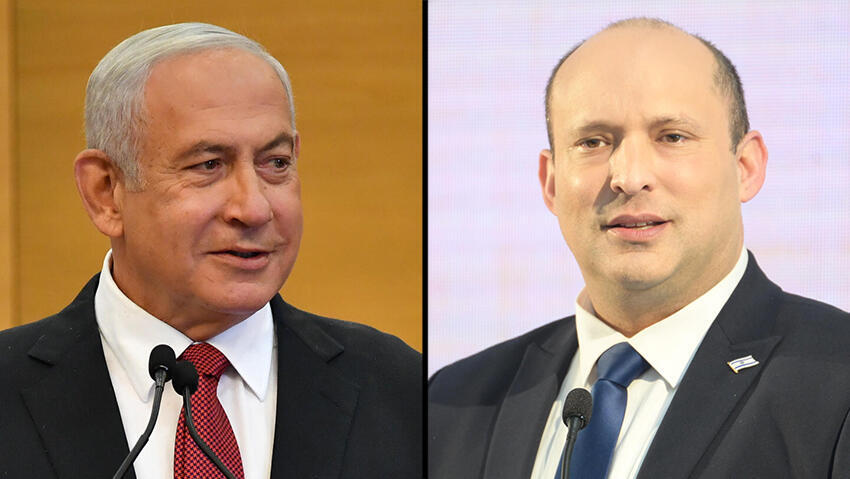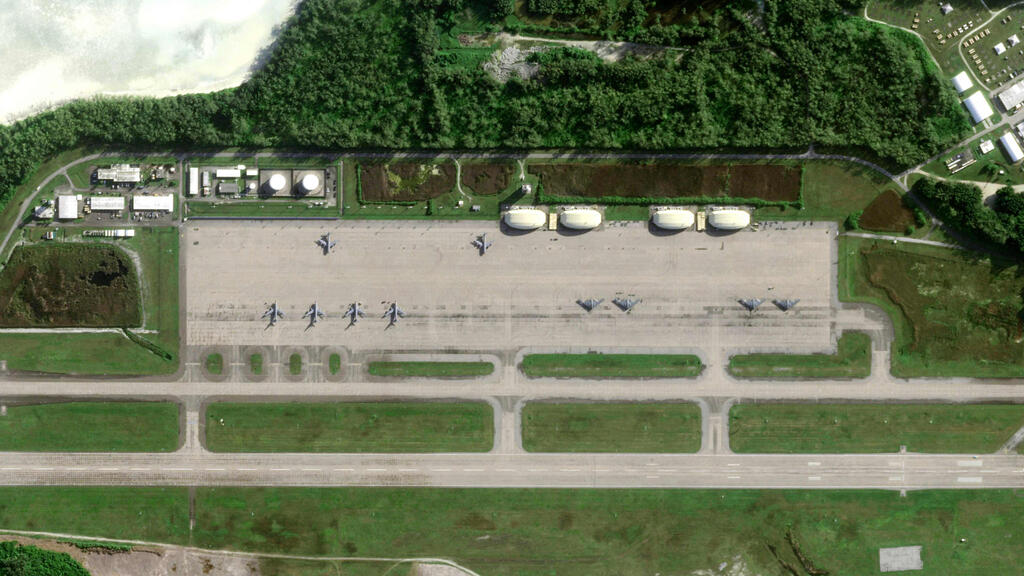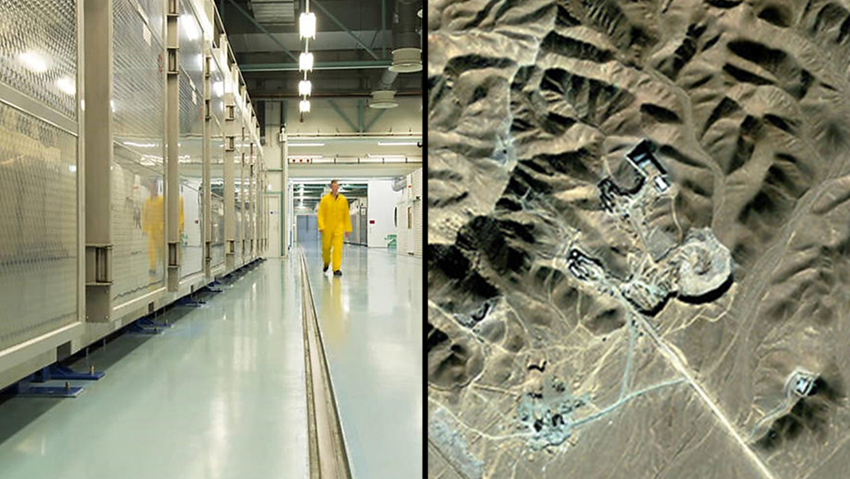After the New York Times report overnight between Wednesday and Thursday revealed new details behind the high-stakes drama between Israel and the U.S. which prompted Prime Minister Benjamin Netanyahu’s urgent trip to Washington, more information about the possible targets and repercussions have come to light.
Netanyahu had hoped to persuade U.S. President Donald Trump to back an Israeli-led military operation against Iran, including a sustained week-long airstrike campaign, but instead found himself sitting beside the U.S. president as he announced new diplomatic negotiations.
Despite Trump’s softer-than-expected approach toward Iran, Netanyahu has largely avoided publicly criticizing him — a caution possibly linked to Trump’s reputation for retaliation, as seen recently with Ukrainian President Volodymyr Zelensky.
Still, Netanyahu sent a veiled message to Washington by releasing an English-language video in which he accused Iranian Supreme Leader Ali Khamenei of threatening Israel’s destruction during negotiations.
So far, according to the report, Netanyahu’s lobbying efforts have failed and Iran’s nuclear facilities will not be attacked in May. However, Trump has not ruled out future strikes if talks collapse. The U.S. has already positioned significant forces in the region, including at Diego Garcia in the Indian Ocean — dubbed the "Bomber Island" after the deployment of a third of America’s B-2 stealth bomber fleet.
These aircraft can carry the U.S.’s most powerful bunker-buster bombs, potentially crucial in any future Iran strike. Additionally, the U.S. has sent a second aircraft carrier to the region with 90 jets and helicopters, F-35 squadrons and 6,000 personnel.
Despite U.S. and Iranian claims that talks are progressing "positively"—with direct contact between U.S. envoy Steve Witkoff and Iranian Foreign Minister Abbas Araghchi — Tehran has warned that Trump’s threats will not work.
Iran insists it will continue uranium enrichment to certain levels and has threatened "severe retaliation" against both the U.S. and Israel, even vowing to strike bombers at Diego Garcia.
Saudi Defense Minister Khalid bin Salman visited Tehran Thursday ahead of renewed negotiations this Saturday. Danny Citrinowicz, an Iran expert at Israel’s INSS and former head of the Iran branch in IDF Military Intelligence, told Ynet: "This is an extraordinary visit by any measure.”
“While some believe the Saudis support an attack on Iran, this trip signals their deep fear of escalation in the Gulf, which could harm their security interests. They prefer a diplomatic solution to the nuclear issue,” he added.
Israel sees a narrow window for strikes
Israel’s recent strikes on Iran — each following failed large-scale Iranian retaliations — have bolstered the belief in Jerusalem that now is a historic, one-time opportunity to cripple Tehran’s nuclear program.
Get the Ynetnews app on your smartphone: Google Play: https://bit.ly/4eJ37pE | Apple App Store: https://bit.ly/3ZL7iNv
Iran’s air defenses are weakened, its missile production damaged and its regime vulnerable. Hezbollah’s setbacks and Syria’s collapsed regime further reduce Iran’s ability to retaliate effectively.
Netanyahu has advocated dismantling Iran’s nuclear program via a "Libya model," alongside missile program restrictions — a scenario now seen as unlikely.
If talks fail, at least 10 nuclear sites are potential targets, with Natanz, Fordow and Isfahan being the most critical:
Natanz: Iran’s primary uranium enrichment site, 300 km (186 miles) south of Tehran, has been repeatedly targeted by Israel. Tehran has since built a deeply buried facility, raising doubts about even the U.S.’s strongest bunker-busters.
Fordow: A fortified enrichment site near Qom, buried 80–90 meters (262–295 feet) into a mountain. Former U.S. President Barack Obama called its design "inconsistent with a peaceful nuclear program."
Isfahan: A major nuclear hub housing uranium conversion facilities and suspected enriched uranium storage.
Striking Natanz and Fordow would require 14,000 kg (30,000 lbs.) bunker-busters, which only U.S. B-2 bombers can deliver — a capability Israel lacks.
4 View gallery


Prime Minister Benjamin Netanyahu, Naftali Bennett
(Photo: Alex Kolomoisky, Yoav Dudkevitch)
Why Trump resists military action
Nuclear and military experts told Reuters that even a major U.S.-Israel operation would only delay, not destroy, Iran’s nuclear program. Ali Shamkhani, an advisor to Khamenei, warned that further threats could lead Iran to expel UN nuclear inspectors and go fully underground.
"Short of regime change or occupation, military strikes cannot eliminate Iran’s path to a nuclear weapon," said Justin Bronk of the UK’s Royal United Services Institute. While Israel could destroy most Iranian sites alone, such an operation would be high-risk, facing advanced Russian air defenses.
Eric Brewer, a former U.S. intelligence analyst, noted: "A U.S. strike would do more damage but both scenarios risk pushing Iran toward a bomb faster."
Opposition leaders have long urged attacks on Iran’s nuclear sites, especially after the October strikes neutralized much of Tehran’s air defense. Opposition head Yair Lapid said: "I proposed striking Iran’s oil fields in October. Crushing its oil industry would collapse the regime. Netanyahu got cold feet."
Former prime minister Naftali Bennett accused Netanyahu of empty threats: "Begin’s doctrine was to strike and destroy, as in Iraq and Syria. Netanyahu’s doctrine is to leak that he wanted to act but was stopped. There won’t be another chance like this one."
Footage from the raid in Syria
(Video: IDF Spokesperson's Unit)
Commando raid plan
Netanyahu reportedly sought a commando raid akin to the September 2023 Shaldag unit operation that destroyed an underground Iranian missile factory in Syria. However, military officials said such a mission couldn’t be ready before October, leading to the shift toward an airstrike plan requiring U.S. support.
The Syria raid involved 100 Israeli commandos infiltrating a facility buried 120 meters (394 feet) underground near Masyaf, which produced precision missiles for Hezbollah. The site was destroyed in 18 minutes without Israeli casualties.






